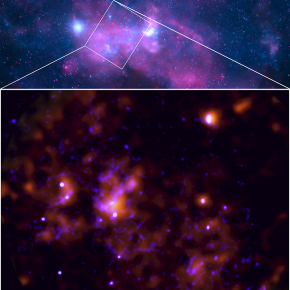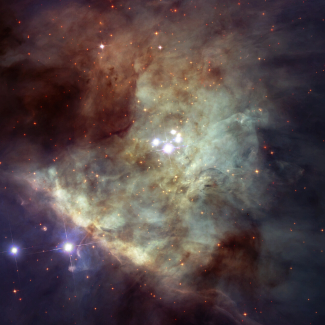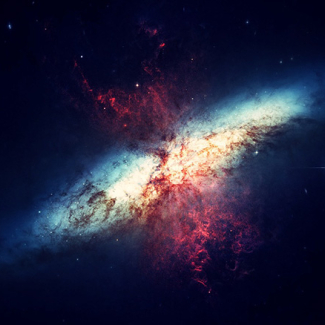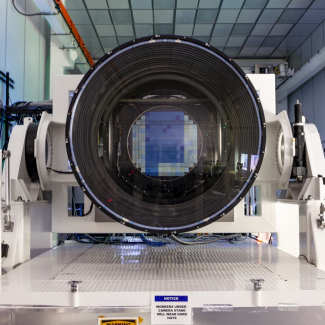
Detection of an echo emitted by our Galaxy's black hole 200 years ago
An international team of scientists has discovered that Sagittarius A* (Sgr A*)1 , the supermassive black hole at the centre of the Milky Way, emerged from a long period of dormancy some 200 years ago. The team, led by Frédéric Marin2 , a CNRS researcher at the Astronomical Strasbourg Observatory (CNRS/University of Strasbourg), has revealed the past awakening of this gigantic object, which is four million times more massive than the Sun. Their work is published in Nature on 21 June. Over a period of one year at the beginning of the 19th century, the black hole gobbled up cosmic objects that got a little too close to it, before once more entering a state of quiescence. No effect was felt on Earth, as the distance between Sgr A* and our planet is too great (about two billion times the distance from the Earth to the Sun). However, the X-ray echo detected, which was emitted about 200 years ago, reveals that the original intensity was at least a million times greater than that currently emitted by Sgr A*. To get an idea of the increase in intensity of the X-ray emission when the black hole emerged from its quiescent state, it is as if a single glow-worm hidden in a forest suddenly became as bright as the Sun. These findings explain why galactic molecular clouds near Sgr A* are shining more brightly than usual: it is because they are reflecting the X-rays emitted by Sgr A* 200 years ago. To carry out their research, the scientists used NASA's IXPE (Imaging X-ray Polarimetry Explorer) satellite3 , which was for the very first time able to detect the polarisation of this X-ray light with great precision and also determine its source, something that had previously proved impossible. Rather like a compass, the polarised X-ray light4 points directly to its source, Sgr A*, even though the latter is now virtually extinct. The scientists are continuing their work on Sgr A* to try to determine the physical mechanisms required for a black hole to switch from a quiescent state to an active one.
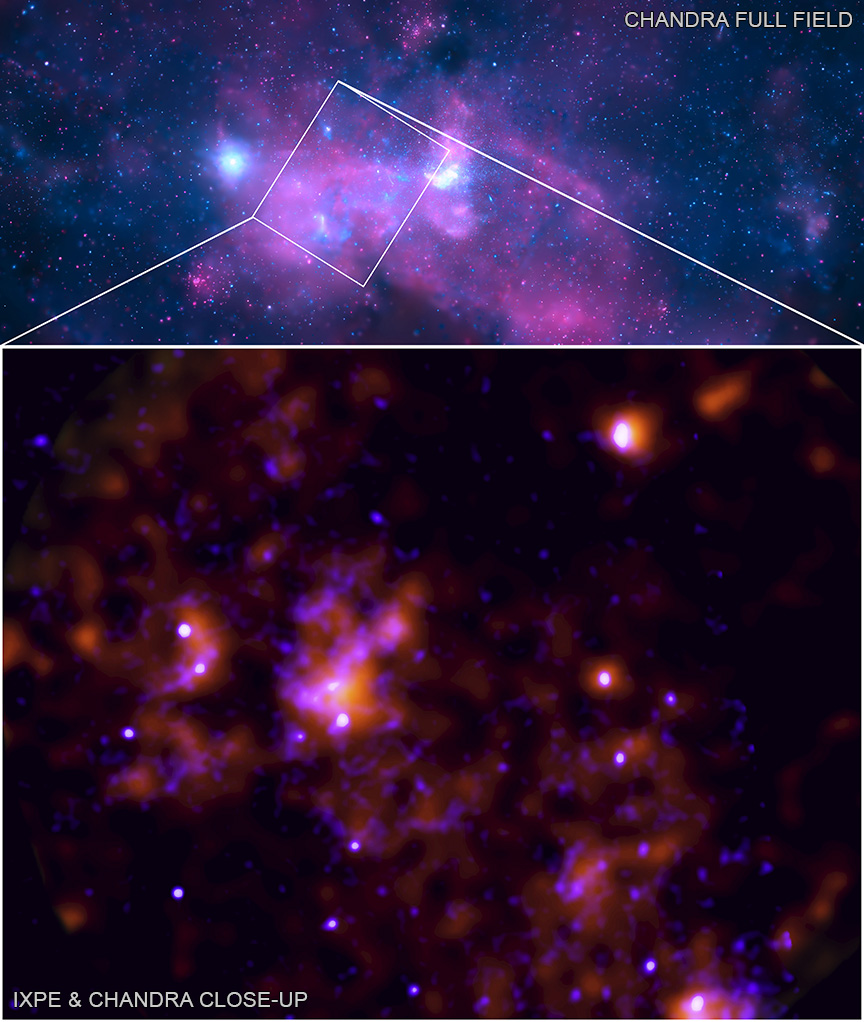
© NASA/CXC/SAO/IXPE
Click on this link to listen the sonification of the detection of an echo emitted by Sgr A* 200 years ago.
- 1Pronounced 'Sagittarius A star'.
- 2The scientists are from laboratories in Japan, the United States, Italy, Hong Kong, Canada, Russia, Germany, the Czech Republic, the United Kingdom, Finland, Spain, the Netherlands, China and France (Observatoire Astronomique de Strasbourg (CNRS/Université de Strasbourg) and Institut de Planétologie et d 'Astrophysique de Grenoble (CNRS/Université Grenoble Alpes)).
- 3They combined this data with that obtained from the European Space Agency's XMM-Newton and NASA's Chandra missions.
- 4Polarisation refers to the preferred direction of the oscillations of the electric field of a light wave.
X-ray polarization evidence for a 200 years-old flare of Sgr A*. Frédéric Marin, Eugene Churazov, Ildar Khabibullin, Riccardo Ferrazzoli, Laura Di Gesu, Thibault Barnouin, Alessandro Di Marco, Riccardo Middei, Alexey Vikhlinin, EnricoCosta, Paolo Soffitta, Fabio Muleri, Rashid Sunyaev, William Forman, Ralph Kraft, Stefano Bianchi, Immacolata Donnarumma, Pierre-Olivier Petrucci, Teruaki Enoto, Iván Agudo, Lucio A. Antonelli, Matteo Bachetti, Luca Baldini, Wayne H. Baumgartner, Ronaldo Bellazzini, Stephen D. Bongiorno, Raffaella Bonino, Alessandro Brez, Niccol`o Bucciantini, Fiamma Capitanio, Simone Castellano, Elisabetta Cavazzuti, Chien-Ting Chen, Stefano Ciprini, Alessandra De Rosa, Ettore Del Monte, Niccolò Di Lalla, Victor Doroshenko, Michal Dovčiak, Steven R. Ehlert, Yuri Evangelista, Sergio Fabiani, Javier A. Garcia, Shuichi Gunji, Kiyoshi Hayashida, Jeremy Heyl, Adam Ingram, Wataru Iwakiri, Svetlana G. Jorstad, Philip Kaaret, Vladimir Karas, Takao Kitaguchi, Jeffery J. Kolodziejczak, Henric Krawczynski, Fabio La Monaca, Luca Latronico, Ioannis Liodakis, Simone Maldera, Alberto Manfreda, Andrea Marinucci, Alan P. Marscher, Herman L. Marshall, Francesco Massaro, Giorgio Matt, Ikuyuki Mitsuishi, Tsunefumi Mizuno, Michela Negro, C.-Y. Ng, Stephen L. O’Dell, Nicola Omodei, Chiara Oppedisano, Alessandro Papitto, George G. Pavlov, Abel L. Peirson, Matteo Perri, Melissa Pesce-Rollins, Maura Pilia, Andrea Possenti, Juri Poutanen, Simonetta Puccetti, Brian D. Ramsey, John Rankin, Ajay Ratheesh, Oliver J. Roberts, Roger W. Romani, Carmelo Sgrò, Patrick Slane, Gloria Spandre, Doug Swartz, Toru Tamagawa, Fabrizio Tavecchio, Roberto Taverna, Yuzuru Tawara, Allyn F. Tennant, Nicholas E. Thomas, Francesco Tombesi, Alessio Trois, Sergey S. Tsygankov, Roberto Turolla, Jacco Vink, Martin C. Weisskopf, Kinwah Wu, Fei Xie and Silvia Zane. Nature, June 21 2023.
